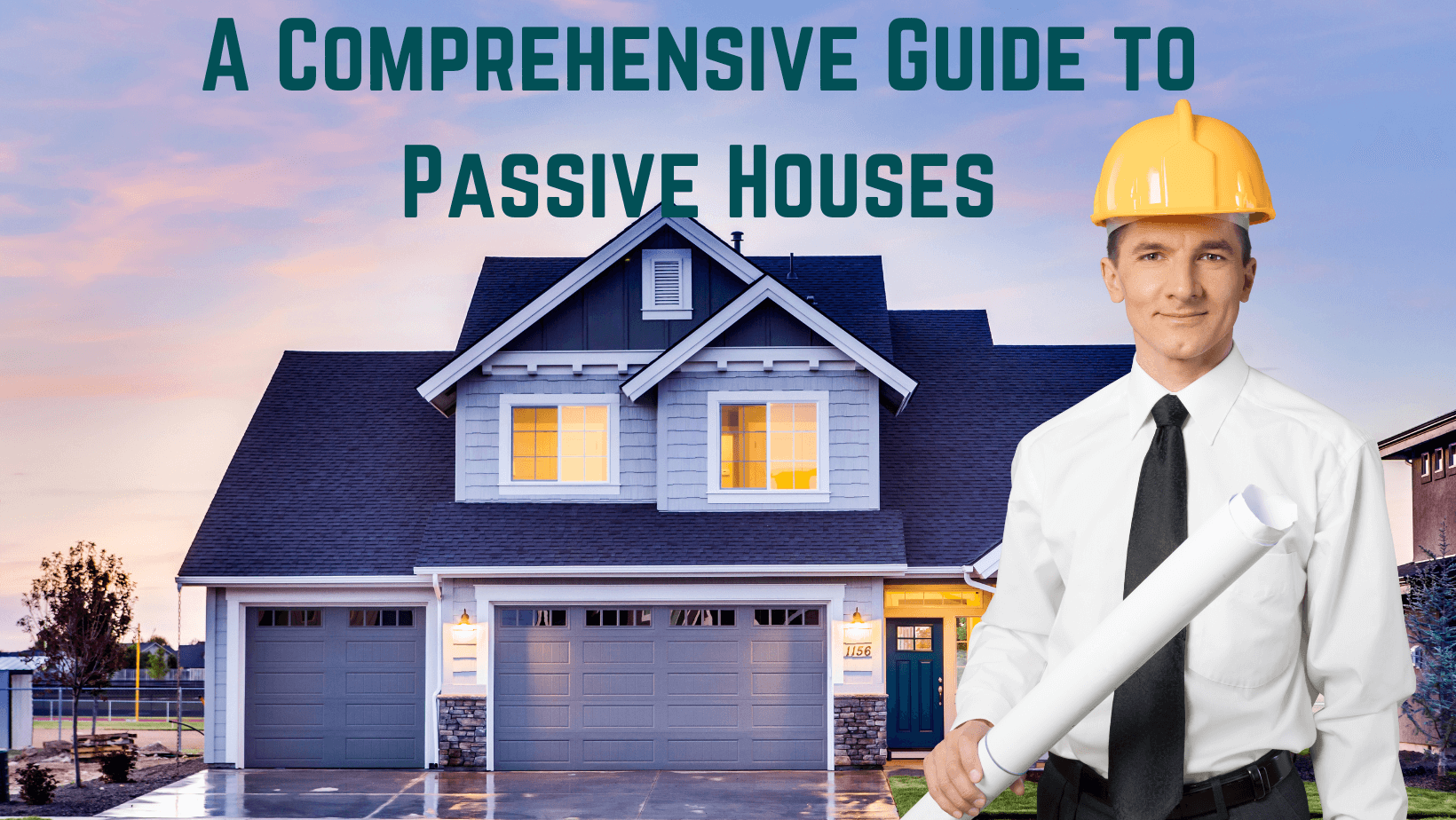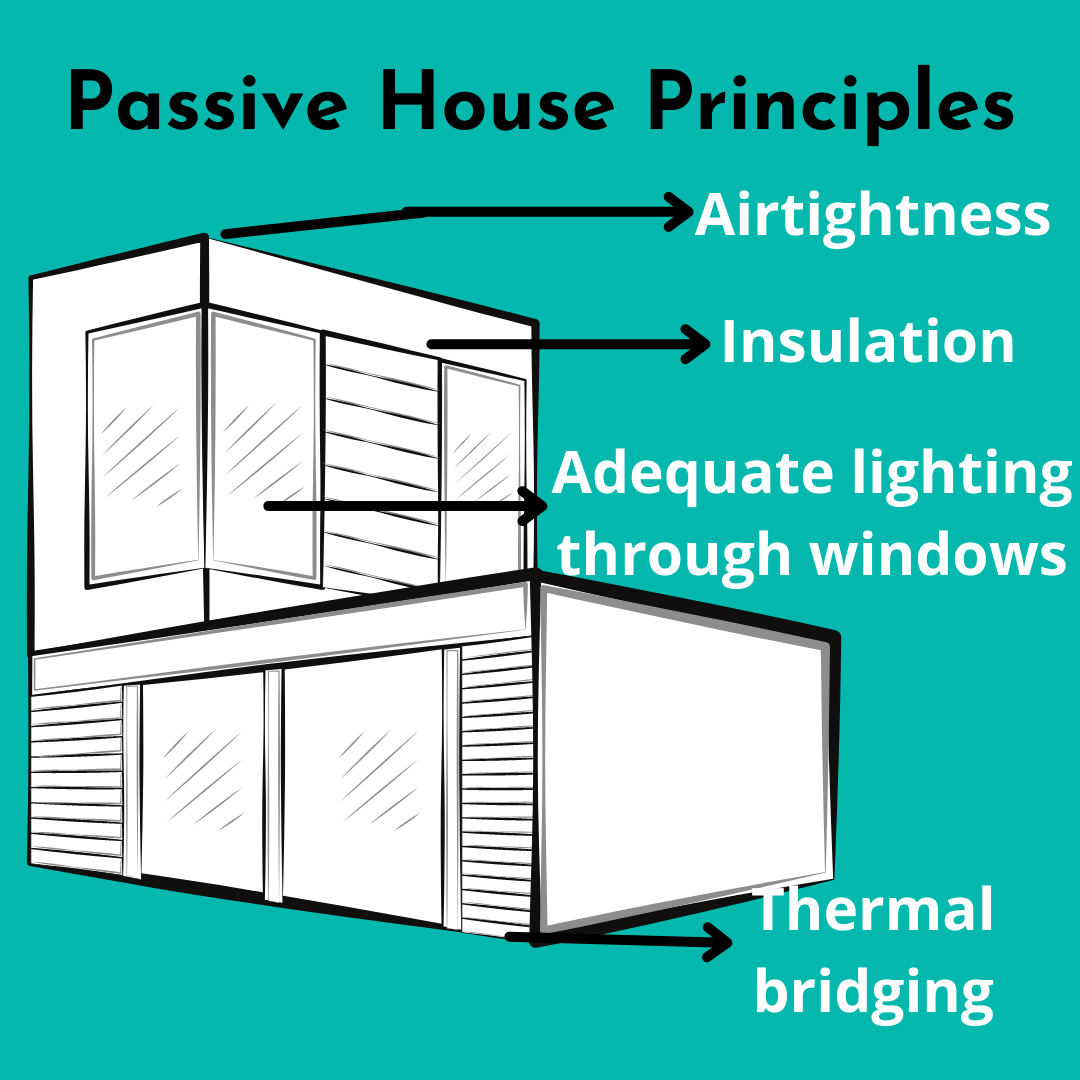Everything you need to know about passive house construction.

Introduction
You might not have heard of Passive houses if you are from India. But this construction culture is booming in western countries. Put it simply, passive houses are energy-efficient houses.
With the increasing awareness and raising calls to adapt to energy-efficient modes of living, passive houses are gaining traction in India. However, there is very little awareness about them among Indian households. This article throws a bright light on the concept of passive houses, their working, and benefits.
What is a passive house?
A typical passive house conforms to the construction principles set by Passive House Institute, Darmstadt, Germany. Architects and civil engineers developed a set of rigorous standards to build an energy-efficient house. These houses automatically neutralize and optimize the temperature inside the house for stable temperature, air quality, and insulation from extreme weather conditions.
Hence, the passive house concept is built on comfort, affordability, and energy efficiency principles. Passive house is not limited to being energy efficient. It is an innovative and eco-friendly solution the world needs.
Passive houses are not energy-efficient alone; instead, they are suitable construction models required for future needs. Passive houses can save 75 to 90% of your energy consumption with intelligent and natural energy-saving techniques.

Some of the architectural features of passive houses include:
- Appropriate windows and ventilation for natural light.
- Insulated windows, walls, roofs, and slabs for insulation from extreme weather conditions.
- Thermal bridging: The temperature transfers from one object to another in a conventional house due to lack of insulation. For example, all the furniture in the house transfers the temperature from one furniture to another.
Passive houses are adequately insulated to avoid this phenomenon. Hence, the interior temperature in passive houses is well-regulated and stable.
Benefits of passive houses
- Affordability
- Quality
- Sustainability
- Efficiency
- Comfort
- Maintenance cost
- Are passive houses expensive?
- What are passive houses?
- What are the five principles of passive houses?
- Thermal bridging
- Insulation
- Airtight construction design
- Large windows to allow natural light
- Mechanical ventilation
Passive houses are efficient, sustainable, and eco-friendly but are they affordable? Passive houses are a wise investment for your future. From the materials used to the construction methods followed, passive houses employ efficient architectural principles.
The raw materials and other components used too are highly efficient and affordable. Moreover, since passive houses are climate-resilient, they reduce additional costs in the future.
The components and construction methods employed are critical to building an efficient house. Passive houses use quality and sustainable components.
Thermal bridging restricts temperature transfer and maintains the optimal temperature of the house. Insulation in passive homes is applied throughout the construction without leaving any gaps. It avoids heat losses or cold corners.
Passive homes are airtight. Houses that are usually not airtight result in heat loss resulting in an imbalance of the interior temperature. Hence, passive homes ensure airtight construction design to avoid temperature imbalances and deterioration of air quality.
Sustainability is the central pillar of passive houses. From the primary components used to the house's functionality, sustainability is one factor passive houses strongly embrace.
Like greenhouses, passive houses use only locally available eco-friendly raw materials. So in a way, passive houses can be defined as an attempt to adapt to an environment-friendly lifestyle and contribute to the earth.
Passive houses reduce the burden of budget. They also help you lead an efficient life in the long term. They save energy bills and give access to pure air (which is rarely found in the hustle and bustle of the city). Besides extensive usage of windows and ample ventilation, the entire house, including walls and floors, are insulated for temperature regulation.
Living in a house that automatically adjusts to the weather is a luxury. But it is not with passive homes. You can live a quality life without adding additional equipment like air purifiers and automatic temperature adjusting ACs. Although passive houses are an intelligent solution, they do not use modern technology as you imagine. Instead, passive houses use only traditional principles to achieve the desired results. Hence, the maintenance cost of passive houses is extremely low compared to ‘smart homes.’ Why are passive houses efficient? Passive houses are specifically built to adapt to the changing weather conditions, and they are weather resilient at the same time. Insulation without gaps, broad ventilation, air-tight sealing across the house, and thermal bridging make a passive house an innovative to all modern construction needs.
The temperature inside the house is stable and optimum without any external interference. Passive homes can be customized according to your needs or local temperature conditions. Materials and construction methods are different for passive houses in tropical and polar regions. With no need for air conditioners or radiators to keep the house cool or warm, passive houses save 75 to 90% of energy.
Conclusion The passive house construction concept is lauded for the intelligent and eco-friendly solution it brings to the table in the construction sector. Smart homes, eco-friendly homes, and green homes are the most feasible solution to the current unpredictable environmental conditions. Passive house is an intellectual technique to build an eco-friendly and sustainable home without spending a lot. Contrary to popular perceptions, passive houses are not expensive. Although they impact your budget, they do not go more than 2 to 3% over your budget.
Passive houses are warmer in winter and cooler in summer. Passive houses are the best investment compared to traditional houses, given the environmental benefits and sustainability.
FAQ's There is a general misconception that all sustainable houses are exorbitantly pricey. On the contrary, passive houses are much cheaper compared to smart homes. They may overshoot your budget by 2 to 3% but not more than that at any cost.
Passive houses are energy-efficient houses that utilize traditional construction principles to build sustainable and eco-friendly buildings The five principles of passive houses include #Experienced Architects #Design #2D-Design #3D-Design #Construction
Company #Housing-Factory #Build-Home #Residential #Interiors
#Commercial #Bangalore #BBMP #BDA #BMRDA #Panchayat #STRR #Municipality-Permission
#A-Katha #B-Katha #Plan-Approval #Building-License #Hassle-Free #Contractor
#Bescom #temporary electric connection #permanent Bescom Electrical connection Talk to our Experts
Hire the best construction service
Office Location:
Epic Housing Factory Pvt Ltd.
3rd floor, Novel Tech Park,
Kudlu Gate, Hosur road
Bengalore-560068
Connect to us:
Call : +91 6360759762 Email:contact@housingfactory.in
© 2021 housingfactory.in All rights reserved
